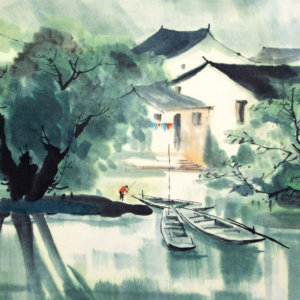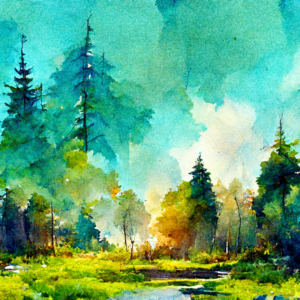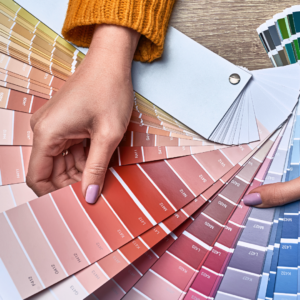Digital art has undergone a remarkable transformation since its inception, driven by technological advancements and new platforms for creativity. From early pixel art to complex 3D modeling, each phase has expanded the boundaries of artistic expression. The evolution of digital art techniques not only reflects changes in technology but also reveals a broader narrative about how artists engage with their medium and audience.
As software and hardware have improved, artists have embraced innovative tools that enhance their creative possibilities. Techniques such as digital painting, generative art, and virtual reality have emerged, allowing for immersive experiences that traditional methods cannot replicate. This progression showcases a shift in how artistic expression adapts to modern societal trends and the demands of the digital age.
The rise of social media and online communities has further shaped the landscape of digital art. Artists now have instant access to feedback and collaboration, fostering a dynamic environment for sharing ideas. These developments empower creators to push the boundaries of their imagination and redefine the concept of art in a digital era.
Historical Context and Milestones
The evolution of digital art techniques can be traced through significant milestones that transformed how art is created and shared. Key innovations paved the way for personal computer use, the development of software tools, and the rise of online communities that foster artistic collaboration.
Early Innovations in Computer Art
The journey of digital art began in the 1960s when pioneers like John Whitney utilized mainframe computers to create visual compositions. These early experiments laid the groundwork for computer-generated art, showcasing the potential of technology in creative practices.
In the following decades, artists like Frieder Nake explored algorithms to generate artwork, emphasizing mathematical aesthetics. Locations like MIT became hubs for such innovations, fostering a spirit of collaboration among artists and computer scientists. These foundational works proved that the integration of technology could expand the boundaries of artistic expression.
The Rise of Mainstream Digital Art Tools
By the 1980s and 1990s, personal computers began to enter homes and studios, significantly impacting the digital art landscape. Software like Adobe Photoshop and Corel Painter emerged as powerful tools for artists, enabling them to manipulate images and create detailed digital paintings.
These developments marked the transition of digital art from niche practices to mainstream acceptance. Artists gained access to a variety of resources and capabilities previously unavailable in traditional mediums. The democratization of art tools allowed for new styles and techniques to emerge as digital artists experimented with graphics, textures, and colors.
The Emergence of Web-Based Art and Online Communities
The late 1990s and early 2000s saw the rise of online art communities, changing how artists interacted and shared their work. Platforms like DeviantArt provided spaces for creators to showcase their talents, receive feedback, and connect with like-minded individuals.
These communities played a crucial role in the digital art market’s expansion. Artists could now reach global audiences, facilitating the sale of digital works and fostering collaborations across geographical boundaries. The internet transformed the perception of digital art, pushing it further into the public consciousness and establishing it as a legitimate form of artistic expression.
Artistic Techniques and Digital Creativity
Digital art has transformed traditional techniques through innovative methods, enabling artists to explore creativity in new ways. Key artistic techniques include digital painting, 3D modeling, and generative art, each contributing uniquely to the evolution of digital creativity.
Digital Painting and Illustration
Digital painting and illustration utilize graphics software such as Procreate and Adobe Photoshop, allowing artists to create artwork that mimics traditional painting techniques. Artists can easily experiment with brush styles, textures, and colors, facilitating a vast array of creative expressions.
Digital canvas environments offer capabilities for layers, which allow for intricate detailing and corrections without the need to start over. This flexibility enhances an artist’s creative process, enabling them to produce polished pieces efficiently.
In recent years, AI-generated art has emerged, introducing advanced techniques that assist artists in generating unique visuals. These tools can analyze vast datasets to suggest styles or generate components, thereby expanding creative possibilities.
3D Modeling and Animation
3D modeling and animation are critical components of digital art, providing a platform for artists to create dynamic, interactive pieces. Software such as Blender and Maya has democratized access to advanced 3D technologies, allowing artists to produce high-quality animations and models.
3D art involves the manipulation of vertices, edges, and faces to create realistic or stylized representations of objects. Artists can utilize techniques like texturing and lighting to enhance their models, creating immersive visual experiences.
Animation further adds movement, breathing life into characters and environments. Keyframe animation and rigging techniques allow artists to create fluid animations, enriching storytelling and engagement in digital media.
Generative Art and Algorithmic Creativity
Generative art harnesses algorithms and mathematical principles to produce artwork autonomously. Artists use programming languages and software to create rules that guide the creation process, resulting in unique visual outputs.
This technique often employs randomness and pattern recognition, challenging traditional ideas about authorship in art. By placing control in the algorithm’s hands, artists can explore creative boundaries and discover new avenues of expression.
AI plays an essential role in generative art, providing tools that can analyze and learn from existing artworks to generate novel compositions. This intersection of art and technology opens exciting opportunities for artistic exploration and creativity.
Technology and Artistic Media
Advancements in technology have significantly transformed artistic media, leading to new forms of expression and interaction. From virtual and augmented realities to blockchain innovations, artists are exploring diverse avenues to create and share their work.
Art in Virtual and Augmented Realities
Virtual reality (VR) and augmented reality (AR) have opened new dimensions for artists. VR immerses viewers in a completely digital environment, allowing artists to craft experiences that engage the senses. Applications like Tilt Brush enable them to paint in a 3D space, expanding traditional notions of canvas.
AR enhances the physical world by overlaying digital content. Platforms like Instagram and Snapchat utilize AR filters, enabling artists to merge physical and virtual realities. This technology democratizes access to art by allowing users to interact with digital works in their own spaces.
Blockchain’s Influence on Art Ownership
Blockchain technology has revolutionized the concept of art ownership through non-fungible tokens (NFTs). Each NFT represents a unique digital asset, enabling artists to sell their work securely on digital platforms. Artists retain copyright while earning royalties on secondary sales, providing new revenue streams.
This technology has made it easier to trace ownership and provenance. Buyers value this transparency, which increases trust in the digital art market. Influential artists have embraced NFTs, creating unique pieces that can only be owned by one individual, merging scarcity with digital innovation.
Interactive Installations and Media Art
Interactive installations challenge traditional artist-viewer dynamics by engaging audiences directly. These works often incorporate technology, prompting viewers to participate using their devices or bodies. Examples include interactive sculptures or multimedia displays that respond to movement.
Media art continually evolves with emerging technologies, integrating video, sound, and digital elements. Artists leverage digital platforms and social media to share their installations with wider audiences. This inclusivity enriches the art experience and invites dialogue surrounding contemporary digital art.
The Future of Digital Art
The future of digital art is marked by significant advancements in technology and creative processes. Artificial intelligence and machine learning are becoming integral tools for artists. They offer ways to generate new ideas and streamline workflows.
Digital art software is evolving rapidly. Programs like DALL-E showcase the potential of AI to assist in creating images from simple prompts. This capability allows artists to experiment with styles and concepts previously unimaginable.
Collaboration among artists and technology developers is crucial. This partnership can lead to innovative tools that enhance artistic expression. As artists embrace these technologies, their creations become more accessible to diverse audiences.
Sustainability also plays a role in digital art’s future. As concerns about environmental impact grow, digital formats reduce the need for physical materials. This shift presents opportunities for artists to explore eco-friendly practices while reaching global audiences.
In essence, the evolution of digital art techniques continues to reshape how artists create and connect with their viewers. The intersection of creativity and technology will drive new forms of expression, making art more dynamic and inclusive.





